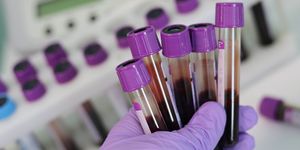Proteins Found to Drive Lupus Symptoms
A recent article in Cell Reports Medicine, by Dr. Felipe Andrade, uncovers insights into lupus symptoms. More specifically, how these symptoms can range in severity among individuals. Andrade is a principal investigator and Associate Professor at the Johns Hopkins School of Medicine and specializes in rheumatology. His work focuses on the mechanisms of systemic autoimmune disease and the role of proteins that mediate this mechanism.
Lupus is an autoimmune disorder in which the body attacks its own tissues and cells. A chronic inflammatory disease, lupus affects about 1.5 million Americans. While the cause of lupus is unknown, there are several subsets including, systemic lupus erythematosus (SLE), cutaneous lupus, drug-induced lupus, and neonatal lupus. The most common subset is SLE with symptoms that include muscle/joint pain, fever, rashes, chest pain, hair loss, fatigue, mouth sores, kidney issues, and others. Unfortunately, there is no cure for lupus, but medication and lifestyle changes help moderate the symptoms. Medication that prevents or reduces inflammation are usually prescribed with other therapies that target pain and protect tissue damage.
Andrade and others explored the underlying mechanism that drives lupus. Researchers conclude that immune proteins, known as interferons, are elevated in lupus and can cause lupus-related symptoms including rashes, chest pain, fatigue, and soreness. Interferons help regulate inflammation and attract immune cells to the site of infection. In a healthy immune system interferon helps fight off infection. However, in the context of lupus, the protein helps to prolong inflammation that causes deterioration of tissues and cells.
Researchers investigated interferon more closely to understand how it could be targeted for therapeutic purposes. Medications that suppress a subset of interferon (interferon I) are currently in clinical trials, however, some patients’ conditions did not improve even with genetic testing that indicated high interferon I levels. This led the team to investigate the other two interferon subsets: interferon II and interferon III.
Different combinations of the interferon subsets were analyzed to determine how their overactivity could result in severity of symptoms in patients. Andrade and the team analyzed 341 patient samples and engineered human cells in a flask to react to the different interferon subsets. After charactering the tissue samples, patients fell into four different groups: increased interferon I only, increase of all interferon subsets, increased interferon II and III, and baseline interferon levels.
Categorization of interferon expression made it possible to make associations between interferon combination and lupus symptoms. Increased interferon I only resulted in skin rashes and sores. Increased interferon I, II, and III resulted in severe symptoms such as organ damage. Unfortunately, not every symptom was associated with interferon levels. This indicates that other biological mechanisms are influencing the immune system other than interferon. In many cases, interferon interacts with other proteins and cells to elicit these autoimmune symptoms. The research conducted by Andrade and his team clearly demonstrate that interferon levels can play a role in lupus symptoms, but other mechanisms are at work. Overall, this research is integral to determine which patients may benefit from specific therapeutic options. Moving forward, the team hopes to learn more about what drives chronic inflammation in lupus in conjunction with interferon.
Article, Cell Reports Medicine, Felipe Andrade, Johns Hopkins School of Medicine








